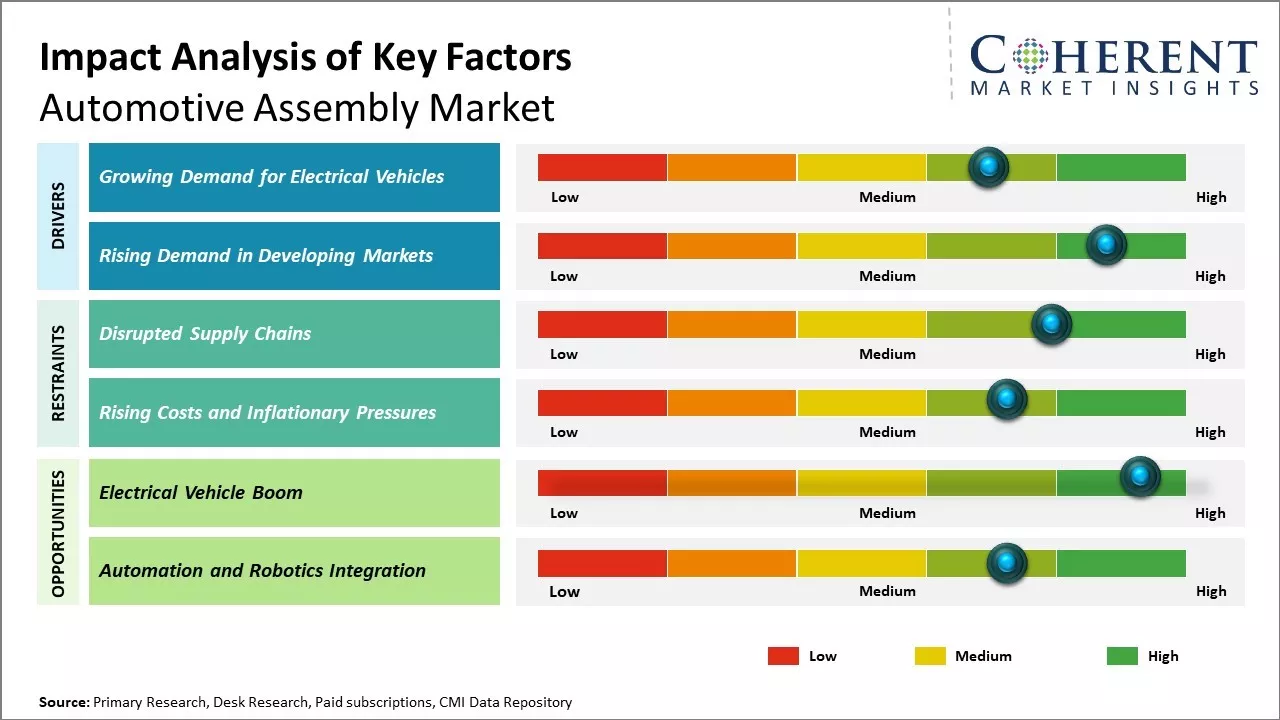Global automotive assembly market is estimated to be valued at USD 52.08 Bn in 2025 and is expected to reach USD 78.36 Bn by 2032, exhibiting a compound annual growth rate (CAGR) of 6.0% from 2025 to 2032.

To learn more about this report, Request sample copy
Major automakers are investing heavily in developing electric vehicle models and technologies to transition from internal combustion engine vehicles. Government support through subsidies and regulations also boosts the adoption of electric vehicles in regions like Europe to reduce emissions. Furthermore, rising environmental concerns and decreasing battery prices are making electric vehicles an attractive alternative for consumers. This rising demand for electric vehicles is expected to drive the automotive assembly market growth in the near future.
Growing Demand for Electric Vehicles
The automotive industry has witnessed a gradual shift towards more environment-friendly vehicles. Stricter emission norms around the world are pushing automakers to invest heavily in developing electric vehicles. Consumer preferences are also changing as people are becoming more conscious about the environmental impact of their commute. Electric vehicles are now seen as a viable alternative to conventional internal combustion engine vehicles, especially for daily city driving. Most major automakers have announced ambitious electric vehicle expansion plans over the next decade to cater to growing demand. New EV models are being rolled out across various vehicle segments attracting more customers. Governments in several countries are offering purchase incentives and subsidies for electric vehicles to further encourage their adoption. Factors like lower operating costs and maintenance are making electric vehicles an attractive option for both individual buyers and fleet operators. With technology advancements, range anxiety issues are also getting addressed to some extent, bolstering customer confidence in EVs. If this growing transition towards electric occurs at a rapid pace in the near future, it can significantly impact automotive assembly operations as electric powertrains require different components and manufacturing processes compared to traditional vehicles. Automakers will need to ramp up investments in electric vehicle production lines and re-skilling their workforce to gain from this market shift.
For instance, according to the report published by International Energy Agency (IEA),global electric vehicle sales had increased by 10 million units in 2022. There was a 35% increase in sales in 2023, pushing the total to 14 million units. This rapid growth has elevated electric cars' market share from 4% in 2020 to 14% in 2022, with expectations to climb to 18% in 2025.
Joining thousands of companies around the world committed to making the Excellent Business Solutions.
View All Our Clients